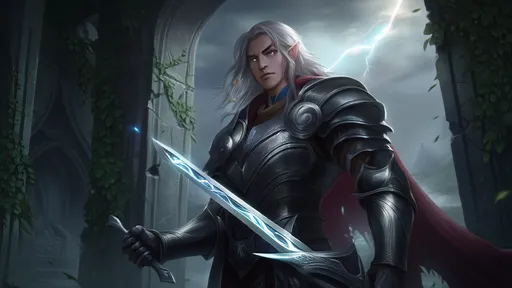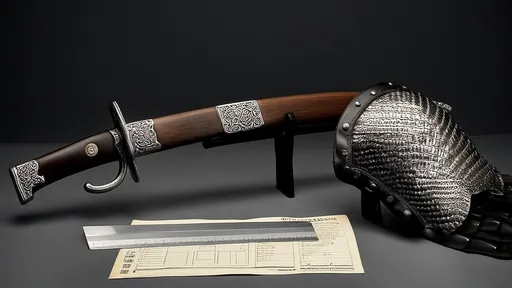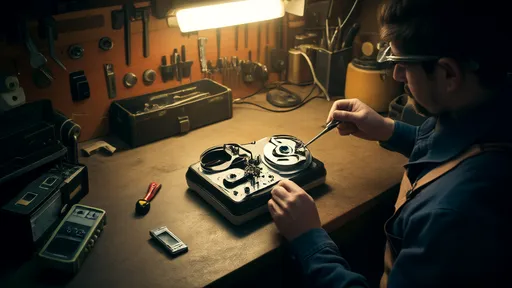The study and replication of ancient weaponry has long fascinated historians, craftsmen, and martial artists alike. The process of recreating these artifacts with historical accuracy is a meticulous journey that blends archaeology, metallurgy, and combat expertise. Unlike modern manufacturing, where precision is dictated by machines, the authenticity of ancient weapons demands a deep understanding of forgotten techniques and cultural contexts.
Historical documentation serves as the foundation for any credible replication effort. Scholars pore over surviving manuscripts, frescoes, and reliefs to glean details about the dimensions, materials, and construction methods of weapons from bygone eras. For instance, the construction of a Roman gladius isn’t merely about shaping steel; it involves studying the iron-smelting techniques of the Iberian Peninsula, where the finest blades were forged. Even the slightest deviation in carbon content or quenching methods can result in a weapon that looks correct but behaves unlike its historical counterpart.
Material authenticity is another critical pillar of the process. Many ancient weapons were crafted from ores that are either rare today or extracted using methods long abandoned. Japanese swordsmiths, for example, relied on tamahagane—a type of steel produced in traditional tatara furnaces. Modern attempts to replicate these blades often fail to capture their legendary resilience because contemporary steel lacks the unique impurities that gave the originals their flexibility and edge retention. Sourcing period-accurate materials often requires collaborations with specialized miners and blacksmiths who keep archaic techniques alive.
The physical construction of these weapons is where theory meets practice. Artisans must master techniques that have faded into obscurity, such as pattern welding for Viking swords or the intricate layering of Damascus steel. These methods aren’t just about aesthetics; they directly influence the weapon’s balance, durability, and lethality. A poorly executed tang in a medieval longsword, for instance, might pass visual inspection but would snap under the stress of actual combat—a fact that would have been unforgivable in its time.
Combat testing separates historically plausible replicas from mere museum pieces. Weapons were tools of war, and their effectiveness can’t be fully assessed without putting them through their paces. Martial artists trained in historical European fencing or kenjutsu often collaborate with smiths to test replicas against period-appropriate targets like mail armor or bamboo mats. The feedback from these sessions can reveal flaws in weight distribution or edge geometry that aren’t apparent in static displays.
Perhaps the most overlooked aspect of historical weapon replication is the cultural and ritual significance embedded in their creation. Many ancient smiths incorporated spiritual practices into their craft, from the chanting of Norse smiths while forging Ulfberht swords to the Shinto purification rituals preceding the creation of a katana. Modern reproductions that ignore these elements miss an essential dimension of what made these objects revered in their time.
The final verification often comes from an interdisciplinary panel of historians, metallurgists, and martial artists. Unlike academic peer review, which focuses on theoretical consistency, this evaluation tests whether the weapon could have truly existed as depicted. A Celtic bronze age spearhead might be chemically identical to artifacts in museums, but if its socket design can’t withstand repeated thrusts into a shield, it fails the ultimate test of historical plausibility.
As interest in historical combat grows, so too does the demand for authentically reproduced weapons. However, the line between educated reconstruction and artistic interpretation remains hotly debated. Some argue that absolute fidelity is impossible without living in the context of the original makers, while others contend that modern tools allow us to achieve what ancient smiths could only approximate. What remains undisputed is that each faithful reproduction brings us closer to understanding the ingenuity and artistry of civilizations that shaped history through steel and sweat.

By /Jul 29, 2025

By /Jul 29, 2025

By /Jul 29, 2025

By /Jul 29, 2025

By /Jul 29, 2025

By /Jul 29, 2025

By /Jul 29, 2025

By /Jul 29, 2025

By /Jul 29, 2025

By /Jul 29, 2025

By /Jul 29, 2025

By /Jul 29, 2025

By /Jul 29, 2025

By /Jul 29, 2025

By /Jul 29, 2025

By /Jul 29, 2025

By /Jul 29, 2025

By /Jul 29, 2025